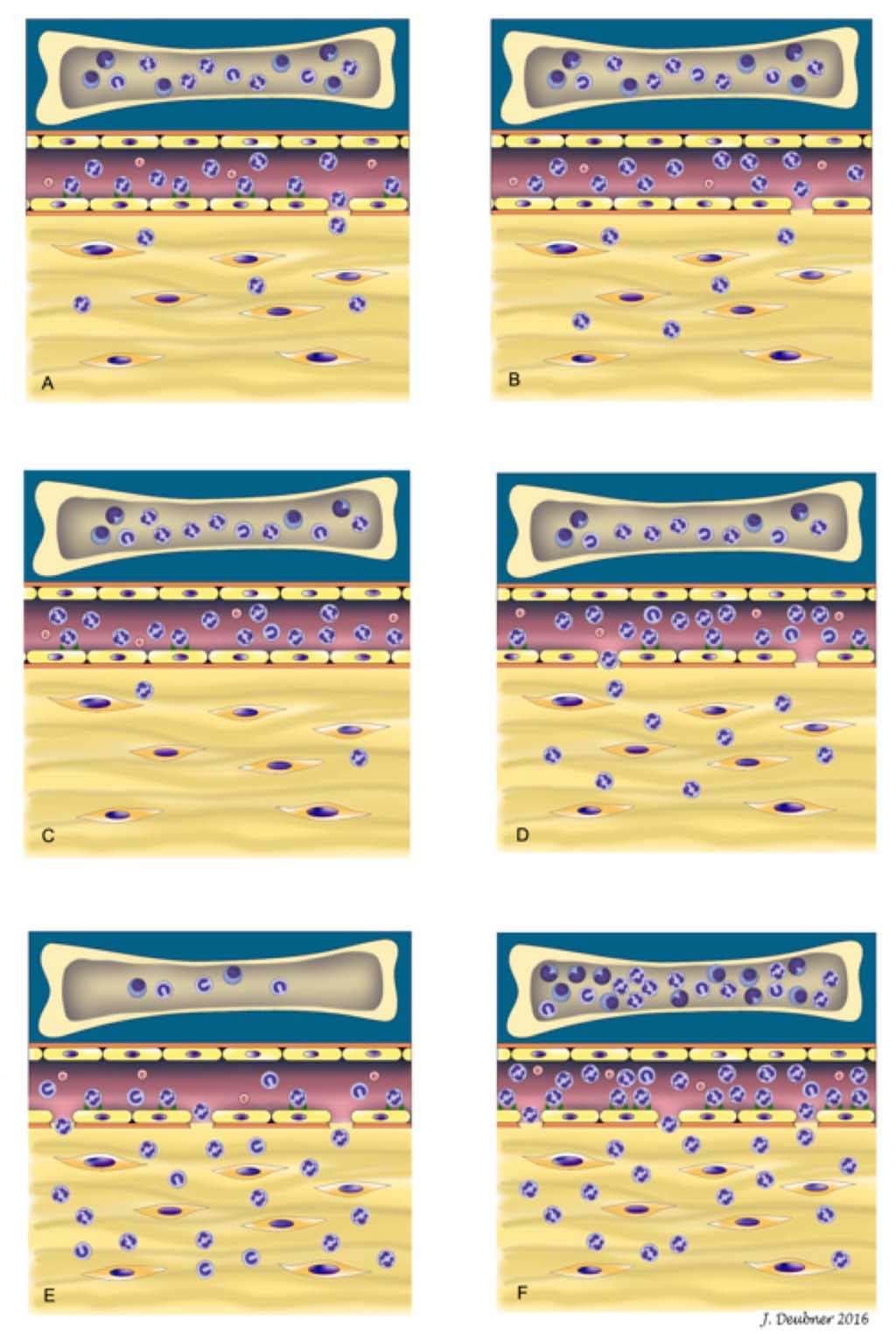Neutrophilia and Neutrophilic Inflammation
An understanding of neutrophil kinetics enables interpretation of changes in the WBC and differential counts on the CBC (Fig. 2.2). A steady state exists between neutrophil production and loss under normal circumstances. Many animals undergoing venipuncture are excited, causing a rise in epinephrine; extreme exertion has a similar effect. Epinephrine release can result in decreased margination of neutrophils and, therefore, an expanded circulating pool. Theoretically this could result in mild neutrophilia, an increase in absolute neutrophil numbers above the RI; however, established RI may already reflect the influence of epinephrine. In particularly fractious animals requiring additional handling during venipuncture, epinephrine-induced neutrophilia may be suspected. This is referred to as an “excitement” or “physiologic” neutrophilia.
Corticosteroids, in addition to decreasing margination of neutrophils, also increase release of neutrophils from the bone marrow storage pool and decrease tissue migration of neutrophils. All of these corticosteroid actions result in expansion of the circulating neutrophil pool which again, may be reflected in neutrophilia on the CBC. Ill animals may release more corticosteroid hormone which is manifested as a mild or “stress” neutrophilia. If the corticosteroid release is massive and acute, such as in severe trauma, or if large doses of exogenous corticosteroids are administered, the neutrophilia can be more marked and low numbers of immature neutrophils (bands) may also be released from the bone marrow. This “stress” or cortisol response can be difficult or impossible to differentiate from inflammation, based on a single CBC, in certain situations.
Inflammatory processes resulting in increased tissue demand for phagocytic cells alter the steady state between neutrophil production and loss. Whether the bone marrow can meet the increased need depends on several factors. These include the presence and nature of an offending agent and the acuteness, severity, and relative size of the inflamed area. For example, a small localized infection caused by a foreign body, such as a wood sliver, is unlikely to affect peripheral blood neutrophil numbers because of the size of the lesion and the lack of demand on bone marrow neutrophil reserves. However, if an animal has a perforating foreign body that enters the peritoneal space, neutrophils from both circulating and marginating pools in the peripheral blood will quickly migrate into the abdominal cavity. Neutrophils will be recruited from the bone marrow storage (post-mitotic) pool, and the peripheral blood WBC count may drop if the storage pool of mature and immature neutrophils is depleted due to the overwhelming demand for neutrophils within the abdominal cavity.

A. Health – About ½ of the neutrophils in the peripheral blood are in the circulating pool and ½ are in the marginating pool, loosely bound to endothelial receptors. Note: there is some variability according to species.
B. Epinephrine response – Epinephrine release or administration results in decreased binding of marginating neutrophils to endothelial receptors.The circulating neutrophil pool expands as a result of decreased neutrophil margination.
C. Corticosteroid/stress response – Corticosteroid administration or increased endogenous production causes neutrophilia in 3 ways: release of neutrophils and sometimes bands from the storage marrow pool is increased; neutrophils move from the marginating pool to the circulating pool in the peripheral blood; and decreased migration of neutrophils into tissues occurs.
D. Acute mild inflammation – Peripheral blood findings are highly variable depending on the nature of the inflammation. This figure demonstrates increased release of neutrophils and low numbers of bands from the marrow, as well as increased migration into tissues.Neutrophilia accompanied by a mild left shift would be expected on the leukogram.
E. Acute, overwhelming inflammation – The tissue demand for neutrophils is high resulting in depletion of the post-mitotic (maturation and storage pool) in the bone marrow.Immature neutrophils, including bands and sometimes metamyelocytes and myelocytes, are also released into the peripheral blood resulting in a severe left shift.Absolute neutrophil numbers in peripheral blood may be within the reference interval or below the reference interval due to the marked egress of neutrophils into tissue sites. This situation often results in a degenerative left shift.
F. Chronic inflammation – Although there is high tissue demand for neutrophils, the bone marrow has had sufficient time to respond to the need.Neutrophilic hyperplasia occurs in the bone marrow and moderate/marked neutrophilia, possibly accompanied by a mild/moderate left shift, would be expected on the leukogram. (Courtesy of Dr. Juliane Deubner, Medical Illustrator, Western College of Veterinary Medicine, University of Saskatchewan.)
Increase in the number of neutrophils in peripheral blood.
Release of less mature neutrophil stages (bands, metamyelocytes, myelocytes) from the marrow into the peripheral blood in response to inflammation.
Increase in immature neutrophils in which there is no neutrophilia and numbers of mature neutrophils are equal to or less than the numbers of immature stages; suggests the bone marrow is not able to meet peripheral demand.
Cellular proliferation- increased number of normal cells.

